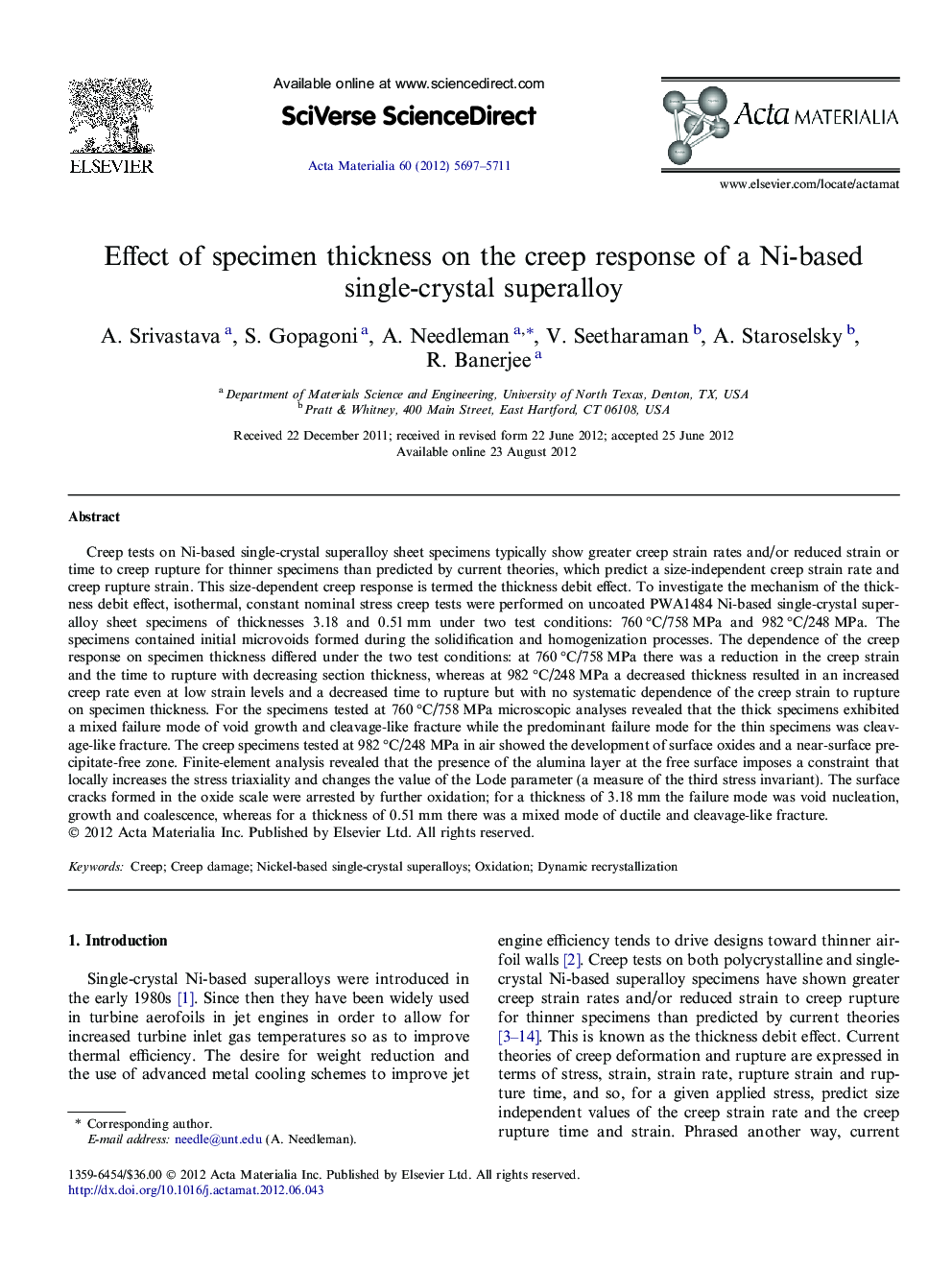| کد مقاله | کد نشریه | سال انتشار | مقاله انگلیسی | نسخه تمام متن |
|---|---|---|---|---|
| 1446587 | 988616 | 2012 | 15 صفحه PDF | دانلود رایگان |

Creep tests on Ni-based single-crystal superalloy sheet specimens typically show greater creep strain rates and/or reduced strain or time to creep rupture for thinner specimens than predicted by current theories, which predict a size-independent creep strain rate and creep rupture strain. This size-dependent creep response is termed the thickness debit effect. To investigate the mechanism of the thickness debit effect, isothermal, constant nominal stress creep tests were performed on uncoated PWA1484 Ni-based single-crystal superalloy sheet specimens of thicknesses 3.18 and 0.51 mm under two test conditions: 760 °C/758 MPa and 982 °C/248 MPa. The specimens contained initial microvoids formed during the solidification and homogenization processes. The dependence of the creep response on specimen thickness differed under the two test conditions: at 760 °C/758 MPa there was a reduction in the creep strain and the time to rupture with decreasing section thickness, whereas at 982 °C/248 MPa a decreased thickness resulted in an increased creep rate even at low strain levels and a decreased time to rupture but with no systematic dependence of the creep strain to rupture on specimen thickness. For the specimens tested at 760 °C/758 MPa microscopic analyses revealed that the thick specimens exhibited a mixed failure mode of void growth and cleavage-like fracture while the predominant failure mode for the thin specimens was cleavage-like fracture. The creep specimens tested at 982 °C/248 MPa in air showed the development of surface oxides and a near-surface precipitate-free zone. Finite-element analysis revealed that the presence of the alumina layer at the free surface imposes a constraint that locally increases the stress triaxiality and changes the value of the Lode parameter (a measure of the third stress invariant). The surface cracks formed in the oxide scale were arrested by further oxidation; for a thickness of 3.18 mm the failure mode was void nucleation, growth and coalescence, whereas for a thickness of 0.51 mm there was a mixed mode of ductile and cleavage-like fracture.
Journal: Acta Materialia - Volume 60, Issue 16, September 2012, Pages 5697–5711